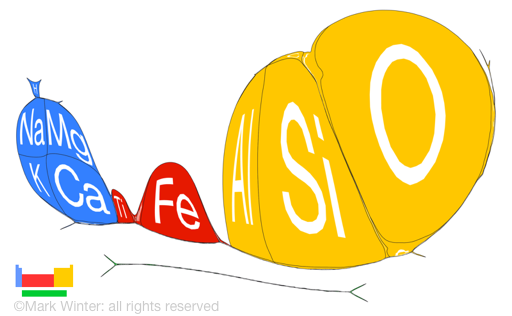Sulfur - 16S: geological information
Sulphur occurs as the free element near volcanoes and hot springs. Many sulphide minerals are known and sulphur is widely distributed in minerals such as iron pyrites, galena, sphalerite, cinnabar, stibnite, gypsum, Epsom salts, celestite, and barite. Sulphur occurs in natural gas and crude oil. It is also present in meteorites.
Jupiter's moon Io owes its colours to various forms of sulphur. A dark area near the crater Aristarchus on the moon may be a sulphur deposit.
Abundances of sulfur in various environments
In this table of abundances, values are given in units of ppb (parts per billion; 1 billion = 109), both in terms of weight and in terms of numbers of atoms. Values for abundances are difficult to determine with certainty, so all values should be treated with some caution, especially so for the less common elements. Local concentrations of any element can vary from those given here an orders of magnitude or so and values in various literature sources for less common elements do seem to vary considerably.
| Location | ppb by weight | ppb by atoms |
|---|---|---|
| Universe | 500000 | 20000 |
| Sun | 400000 | 10000 |
| Meteorite (carbonaceous) | 41000000 | 22000000 |
| Crustal rocks | 420000 | 270000 |
| Sea water | 928000 | 179000 |
| Stream | 4000 | 130 |
| Human | 2000000 | 390000 |


The chart above shows the log of the abundance (on a parts per billion scale) of the elements by atom number in our sun. Notice the "sawtooth" effect where elements with even atomic numbers tend to be more strongly represented than those with odd atomic numbers. This shows up best using the "Bar chart" option on the chart.

